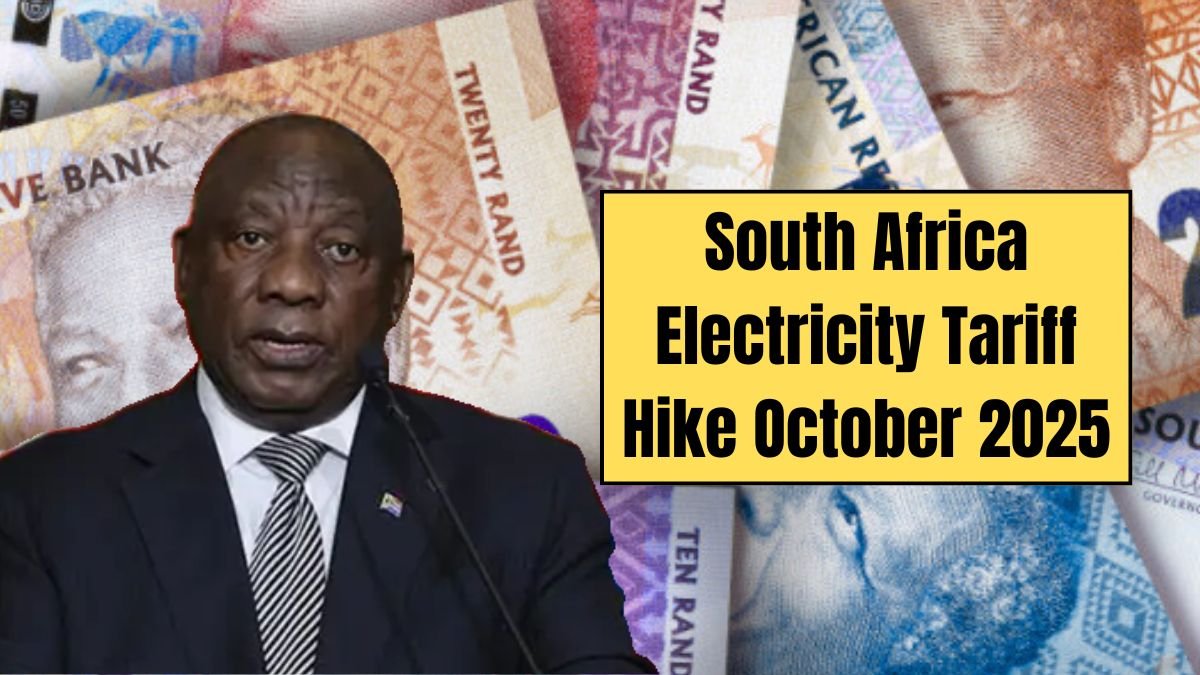Economic problems generated electricity turmoil for households, enterprises, and governments in South Africa. Pernicious pricing, downgrading operational costs, piling debt burden, and grid maintenance demands forced the massive revenue increases for the period of 2025/26. This is what NERSA did; yet these will sunset by April 2025; however, for the whole year, electricity prices are felt by consumers, much of the full fury is determined to strike in October 2025. We will, therefore, go ahead and dissect the tariff increments that were just approved; what impacts on the consumer, and what the future holds as a consequence.
What NERSA Has Approved for 2025/26
- One of the biggest price adjustments in recent times will see a tariff increase for Eskom direct customers of 12.74% with effect from 1 April 2025.
- Thereafter, a further increase of 11.32% has been approved for municipalities that buy power from Eskom in bulk and resupply it to end-users as from 1 July 2025.
- These price increases are in terms of the Eskom Retail Tariff and Structural Adjustment (ERTSA), where electricity prices are aimed at operational cost levels and a reduction in cross-subsidies.
- And, the tariff structure went under further review. Some of the major changes are as follows:
- Removal of Inclining Block Tariffs (IBTs): In more or less all categories, these grants used to keep low consumers subsidised by an enormous rate on higher usage, whereas now they must be charged the same rate for every unit of electricity consumed.
- Massive increases in monthly fixed-charge components have taken place for some tariff options, with some fixed charge components going up by as high as 88% (Homepower 4 and Homeflex 4).
- Modification of time of use blocks – peak hours will be longer; off-peak blocks will either be shorter or be rescheduled; and an off-peak block that used to apply discounted rates on Sunday evening will only be standard rate now.
Why October 2025?
October ought, therefore, not to initiate price escalation, but by then, there shall have been several billing cycles under the new regime; hence, October 2025 shall simultaneously mark:
- All of the impacts of new electricity use levels under revised flat rate structure.
- Higher fixed charges and higher peak/off-peak usage charges.
- Changes in the municipality surcharges or localized mark-ups attached onto Eskom base rates.
- October usually sees municipalities discounting some of the charges and sometimes putting on their own local charges. That is to say, local tariff additions may be levied over and above those in the national baseline.
Impact on Households & Businesses
- Low-income households: Consumers with relatively low electricity use (say below 350 kWh a month) could undergo increases much above average because removal of subsidies and structural changes tend to increase costs on a per-unit basis. Some municipalities provide relief through Free Basic Electricity (FBE) allocations to indigent households. These programs will gain relevance under the new tariffs.
- Middle and high users: If a large consumer relatively gains due to flattener rate (less steep jump between lower and higher consumption blocks), large increases, however, may come through increase in fixed charges, and time-of-use tariffs could be a further issue.
- Business and industrial users: Depending on whether negotiated or special rates (time-of-use, demand charges or negotiated pricing arrangements, etc.) are in play, large consumers may see a different set of changes.
Low-Hanging Fruits Within Your Powers:
- Determination of Tariff Type: To ascertain whether it is under Homelight, Homepower, or Homeflex, prepaid or on credit.
- Load Shifting: Heavy appliances require usage during off-peak hours to keep evening-class costs down.
- Consumption Reduction: Some little things, like LED lighting, efficient appliances, and properly set insulation, can greatly help in reducing consumption.
- Potentially look into Solar Photovoltaic-Battery Backup Systems if your municipality allows grid export or “netting.”
- To the extent that you qualify, apply for indigent relief or Free Basic Electricity with your municipality.
also read : R2,320 SASSA Disability Grant 2025 – Who Qualifies And When You Will Be Paid
